| Japanese January 15-16: Going south |
|
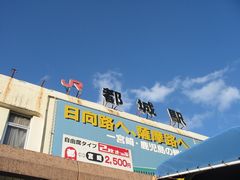 |
I visited Miyakono-jou city on business. I have passed the station many times in the past, but this is the first time for me to get off the train here. |
| The winter scene looking through the hotel window seems to be very cold surrounded with low hills in the dusk. Miyakonojou is said to be very cold in winter. | 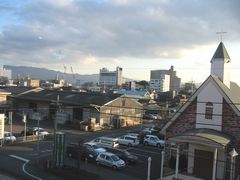 |
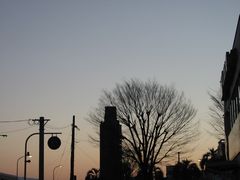 |
Seven in the morning. The air is cold and crispy sticking my skin. |
| Kirishima mountain range is visible in the cloud covered with snow on the top. | 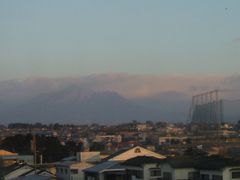 |
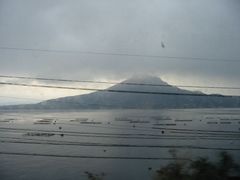 |
A snow capped mountain came into my sight unexpectedly across Kinkou Bay. It is Mt. Sakurajima. |
| I said good bye to my friends at Kagoshima station and visited Sakurajima which I had visited many years ago. I got on a shuttle ferry in the rain. |
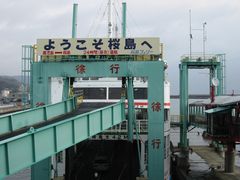 |
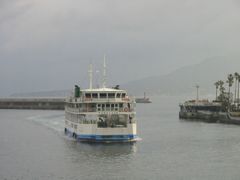 |
The shuttle ferry connects Kagoshima City with Sakurajima in just 15 minutes. |
| It is very sorry that I can't see Mt. Sakurajima as it rains from the morning. | 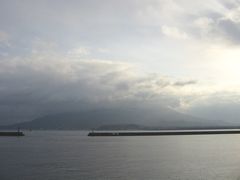 |
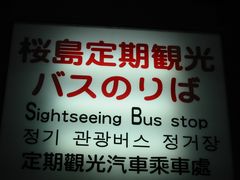 |
I waited a sightseeing bus at the ferry terminal. The sightseeing map is written in Japanese, English, Korean, and Chinese. |
| When the bus started, the sky suddenly cleared up and I found a beautiful rainbow in the sky. | 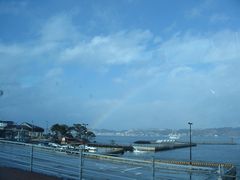 |
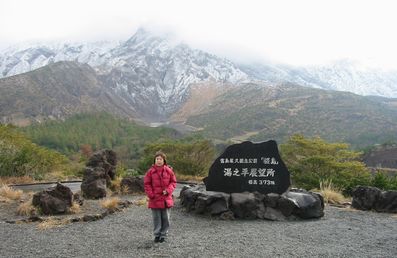 I arrived at Yunohira observation deck. Minamidake peak of Sakurajima comes close to me in the back. It is said Sakurajima is seldom covered with snow, say several times a winter. It is very cold today. |
|
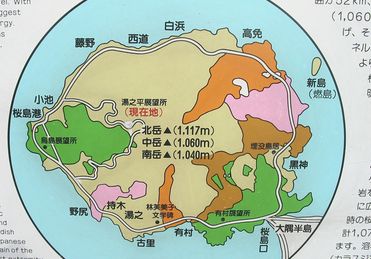 The lava flow map shows the volcanic disaster in the past. |
|
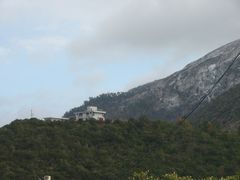 |
The white building is a research center of Kyoto University. The volcanic activities are always transmitted from here to Kyoto, they say. |
| Regular sightseeing bus goes around Sakurajima peninsula with a painting of smoking volcano on the side. | 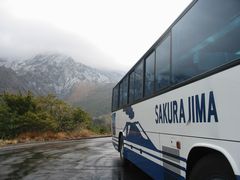 |
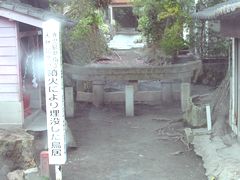 |
I go around the peninsula by bus. In 1914, a big eruption took place and buried a Torii(a gateway at the entrance to a Shinto shrine) like this at Kurokami district. The original height was three meters, but it stands just one meter, a terrible scene. |
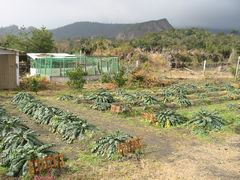 |
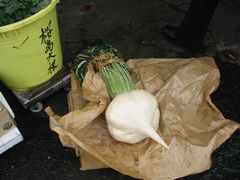 |
| The volcanic ash land is good for making a sort of horse radish. The huge radish is called Sakurajima Daikonn with the size of a kid's head. | |
| Many strange monuments of molten rock are here and there telling the terror of natural calamity. | 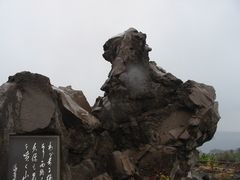 |
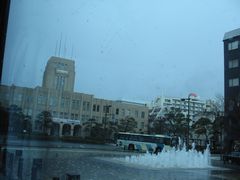 |
I returned back to Kagoshima City after the round trip of the peninsula. Sakurajima is one of the most active volcanoes in the world. Last year, we have had so many natural disasters and Sakurajima tells us the importance of disaster measures in daily life. Kagoshima Municipal Office. |
| The massive distinctive building is Yamagataya department store. | 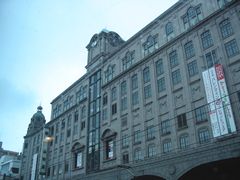 |
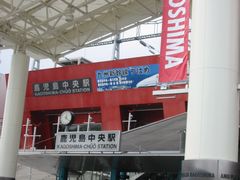 |
The bus arrived at Kagoshima Central station, newly built terminal opened at the Shinkansen service started last year. |
| The station is very modern with a commercial complex. A large Ferris wheel cerebrates the opening as well. | 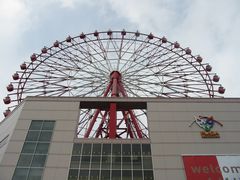 |
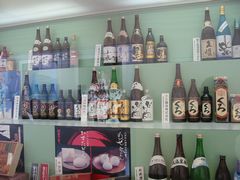 |
Shouchuu, a sort of strong distilled alcoholic drink, is a special product of Kagoshima. |
| I took a special lunch of Kibinago small fish. It was very good. | 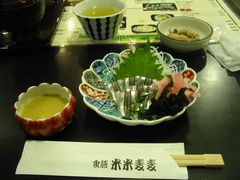 |
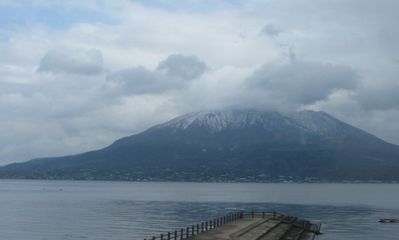 Good bye terrible active volcano, see you again or not. It took five and a half hour from Kagoshima to Oita, a long long trip. |
|